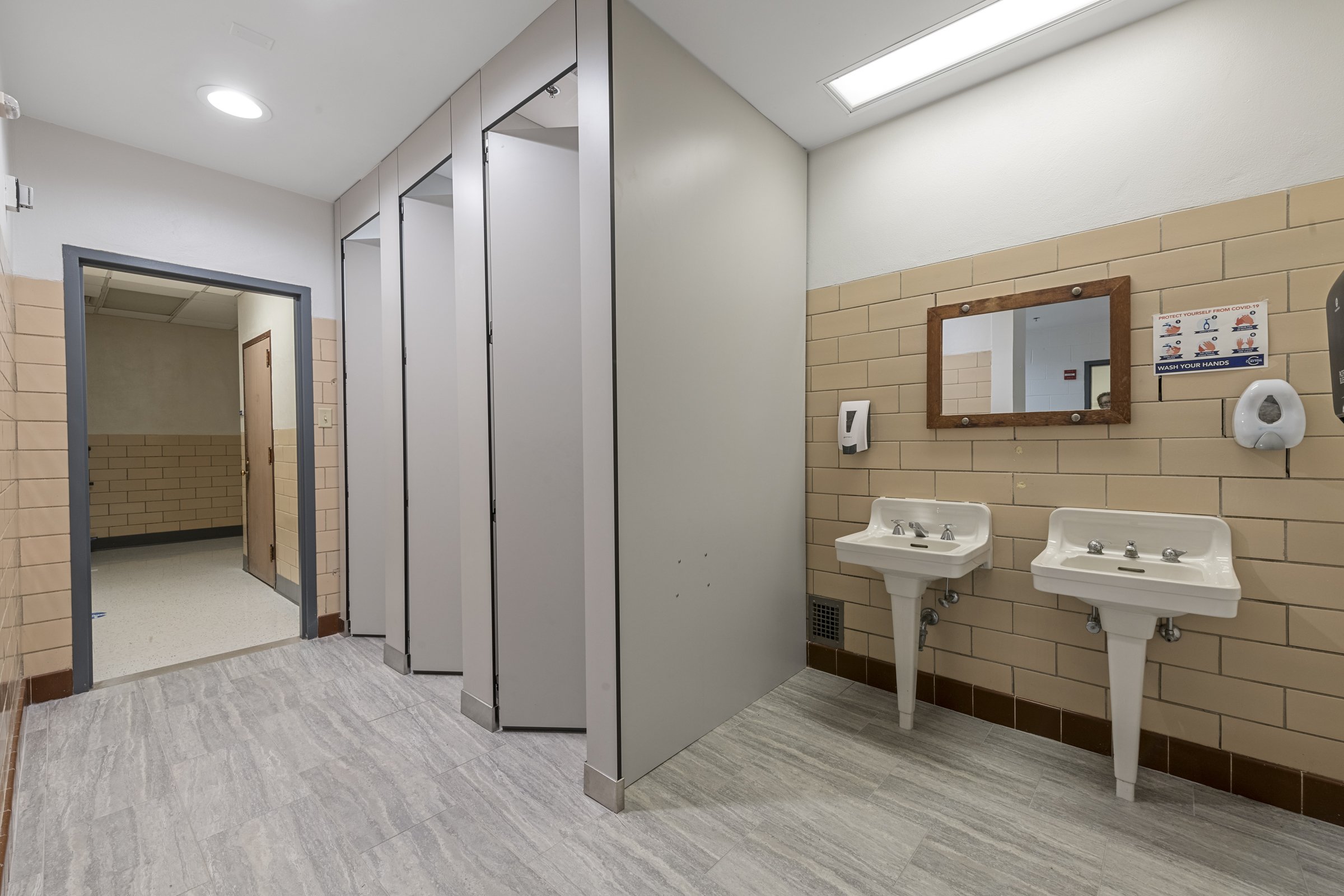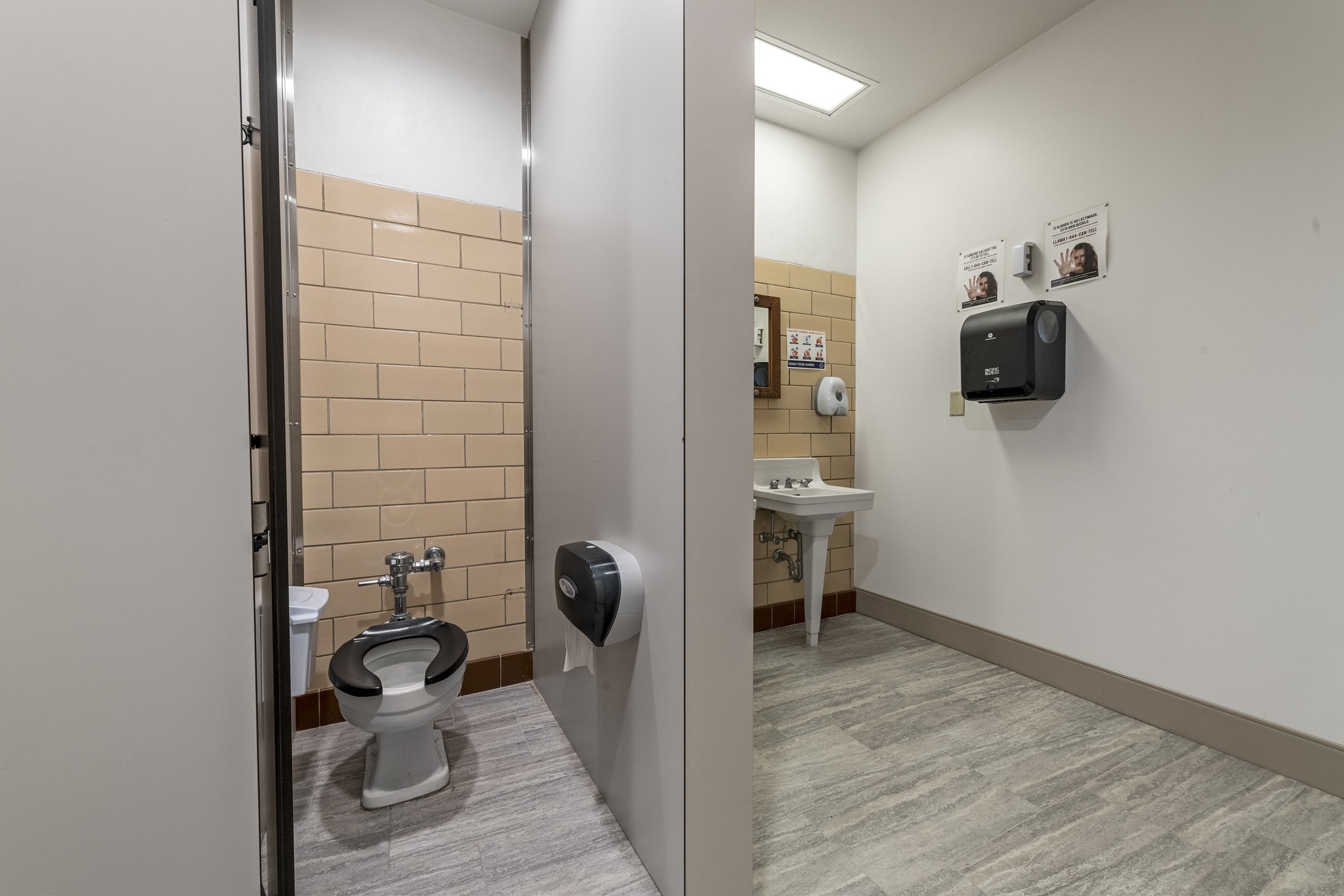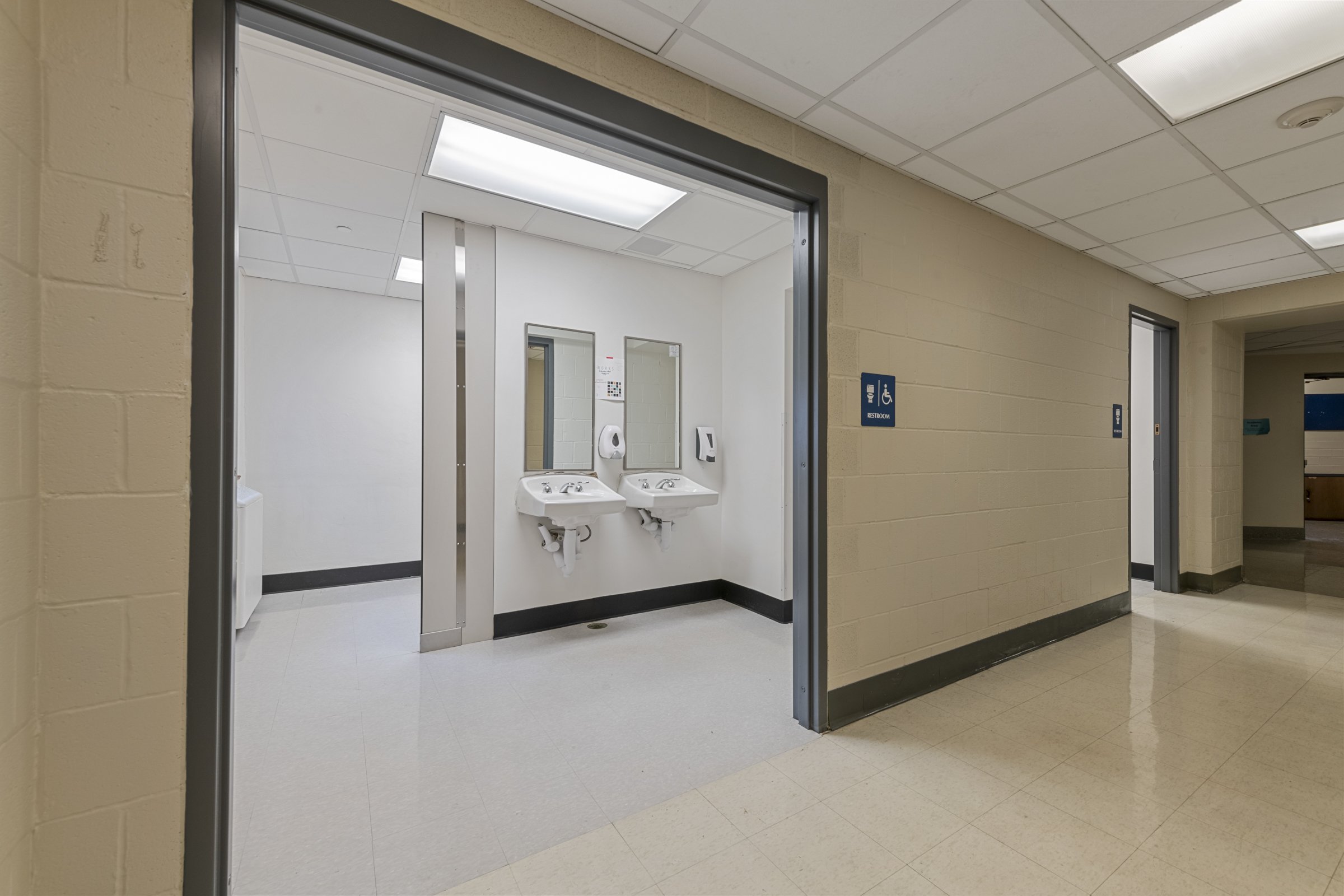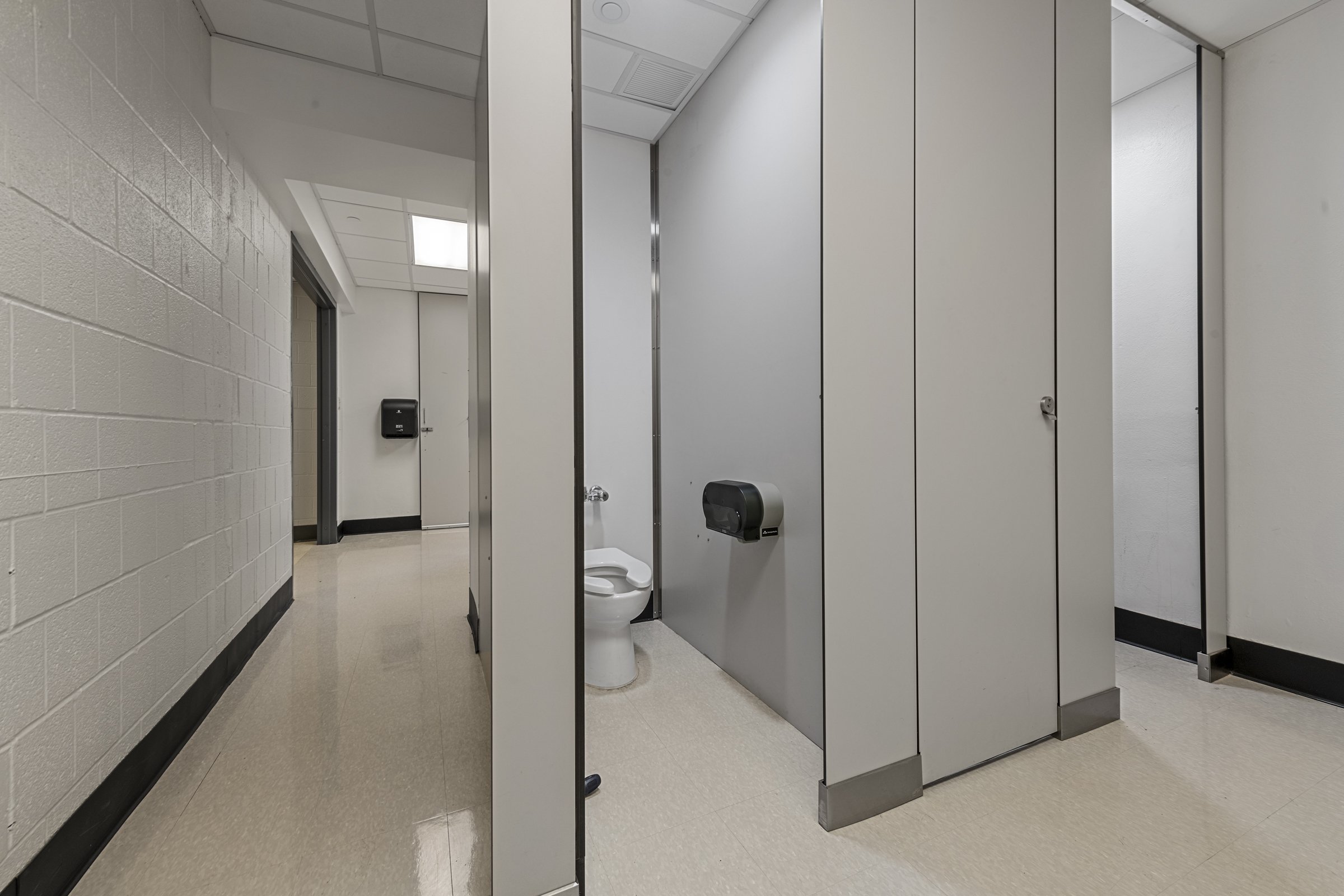What's the most overlooked element of good school design? Restrooms.
Restrooms are often “forgotten spaces” in school design, but putting thought into students’ restroom experiences can reap benefits for school districts.
We get strong impressions about a facility, and its owners, based on these intimate spaces: is the restroom clean? Is it well-lit? Well-ventilated? Does everything work? Can you move around easily? Restroom design is powerful — so why are they so often an afterthought in school design? School districts are heavily invested in creating welcoming, healthy learning environments for students and faculty, but they often ignore this vital part of the building which receives daily use.
All-gender restrooms designed for the School District of Clayton.
Photographs courtesy MR & Associates, Inc.
School restroom design can enhance performance, behavior, and well-being by focusing on the following priorities:
Health and Hygiene — A school restroom must use design to ensure good hygiene among the student body and reduce risk of infectious disease with easy access to hand-washing, hands-free design, and thoughtfully placed facilities.
Durability and maintenance — Restrooms receive a lot of wear-and-tear from heavy, daily use and constant exposure to moisture and harsh cleaning chemicals. Because of this, it’s important to make sure you are using your budget wisely to select durable materials. Working with your design team to put together a life-cycle cost analysis will help your district extract the most long-term value from finishes and fixtures.
Mental and Emotional Health — A school restroom need to also demonstrate care for student’s mental and emotional wellbeing. Visual and acoustic privacy, good lighting, and small touches that show thoughtfulness towards the users’ experience are all cost-effective, high-value ways of enhancing feelings of safety, calm, and well-being.
Safety and Security — Curbing bad behavior is also essential to a sense of safety in a school restroom. Restrooms are one of the few spaces in a school building where students are away from the eyes of faculty. Restroom entrances must be in highly visible, easily monitored locations in the school building to discourage bad behavior.
Inclusivity — An important conversation happening in school districts is how to ensure inclusivity for LGBTQ+ students in restroom design. Many school districts are adapting to new norms by installing all-gender restrooms in their facilities. Designing restrooms that are inclusive of all students’ gender identities is important for reducing bullying and keeping students physically, emotionally, and mentally healthy.
Modest, cost-effective renovations such as upgrades to finishes, lighting, and fixtures make a huge impact on students’ restroom experience, and deliver high value to school districts. Tangible returns on investment after restroom upgrades include lengthened life-cycle of materials and lower custodial costs because of more efficient cleaning processes. The resulting improvements to students’ mental and emotional health from well-designed restrooms enhance their cognition, retention, and overall academic performance.'
Click here to download our full whitepaper on School Restroom Design. This whitepaper includes more photos, resources, and floor plans of restroom designs.




